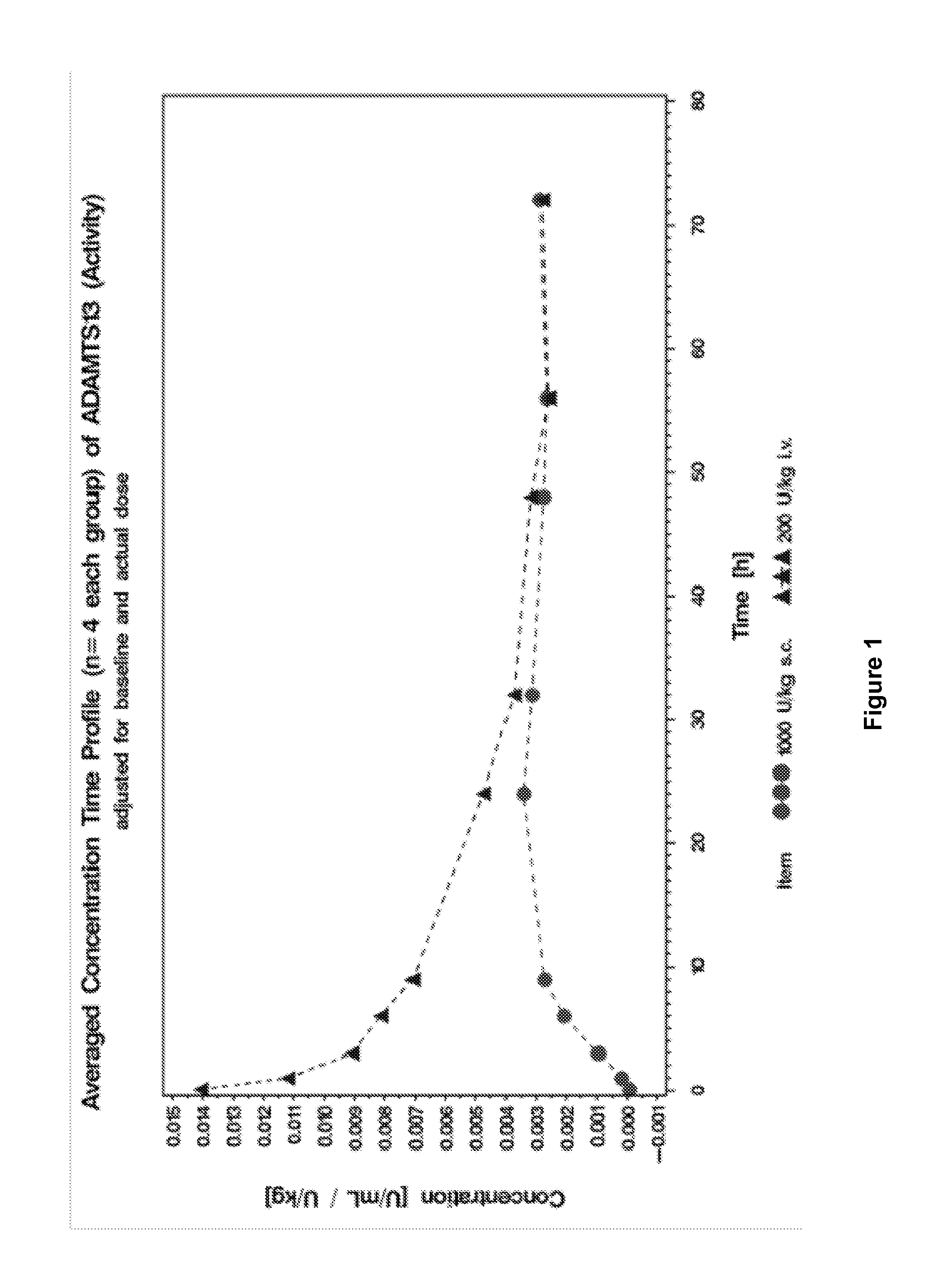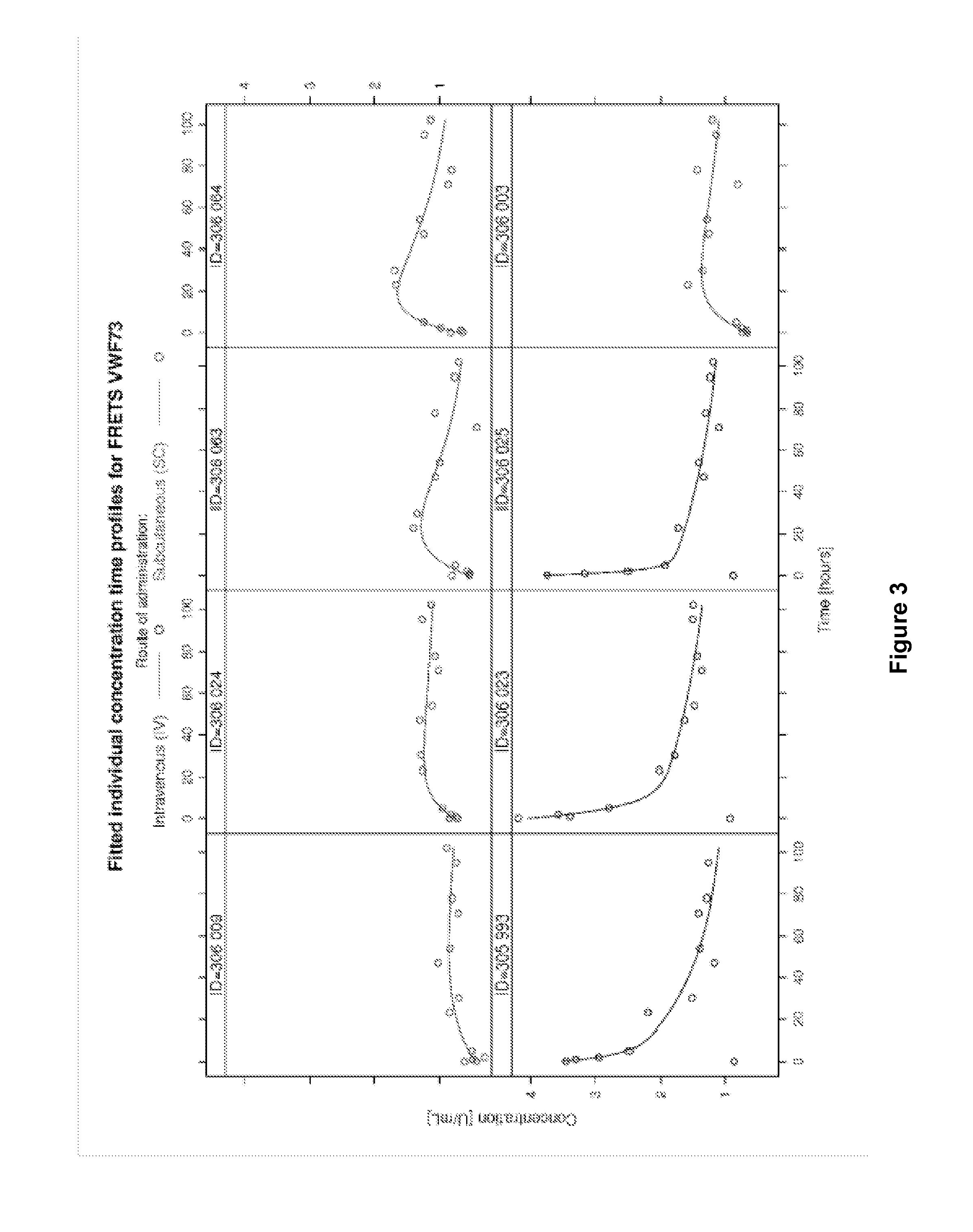Subcutaneous administration of adamts13
- Summary
- Abstract
- Description
- Claims
- Application Information
AI Technical Summary
Benefits of technology
Problems solved by technology
Method used
Image
Examples
example 1
The Pharmacokinetic Properties of rADAMTS13 with Intravenous and Subcutaneous Administration
[0178]This study was conducted to evaluate the pharmacokinetic properties of recombinant ADAMTS13 in Göttingen minipigs after intravenous (i.v.) or subcutaneous (s.c.) administration. In this study, 4 male Göttingen minipigs were administered i.v. ADMTS13 (the “intravenous group”) and 4 male Göttingen minipigs were administered s.c. ADMTS13 (the “subcutaneous group”).
[0179]Male Göttingen minipigs were trained before the start of the study to cooperate with the study procedures. Thus, the animals were not restrained during administration of anesthetics or the test item and blood sampling.
[0180]The animals were anesthetized for catheter implantation using a Zoletil mix consisting of 1.11 mg / kg tiletamine, 1.11 mg / kg zolazepam, 0.56 mg / kg xylazine, 0.56 mg / kg ketamine, and 0.11 mg / kg butorphanole (i.m.). Isoflurane was used for anesthesia maintenance when necessary. The animals received pure oxy...
example 2
The Pharmacokinetic Properties of rADAMTS13 with Intravenous and Subcutaneous Administration
[0187]This study was conducted to evaluate the pharmacokinetic properties of recombinant ADAMTS13 in Göttingen minipigs after intravenous (i.v.) or subcutaneous (s.c.) administration. In this study, 4 male Göttingen minipigs were administered i.v. ADMTS13 (the “intravenous group”) and 4 male Göttingen minipigs were administered s.c. ADMTS13 (the “subcutaneous group”).
[0188]The male Göttingen minipigs were acclimated to study procedures and anesthetized for catheter implantation as described in Example 1.
[0189]This study was a trial using 3 and 5 male Göttingen minipigs per group. Both groups received a nominal dose of 200 FRETS-U / kg rADAMTS13. Three animals were dosed i.v., the other five animals were dosed s.c. Blood was sampled via the central venous catheter before administration of the test item and 5 min, 1 h, 2 h, 6 h, 5 h, 23 h, 30 h, 47 h, 54 h, 71 h, 78 h, 95 h and 102 h after admini...
PUM
| Property | Measurement | Unit |
|---|---|---|
| Time | aaaaa | aaaaa |
| Time | aaaaa | aaaaa |
| Time | aaaaa | aaaaa |
Abstract
Description
Claims
Application Information
 Login to View More
Login to View More - Generate Ideas
- Intellectual Property
- Life Sciences
- Materials
- Tech Scout
- Unparalleled Data Quality
- Higher Quality Content
- 60% Fewer Hallucinations
Browse by: Latest US Patents, China's latest patents, Technical Efficacy Thesaurus, Application Domain, Technology Topic, Popular Technical Reports.
© 2025 PatSnap. All rights reserved.Legal|Privacy policy|Modern Slavery Act Transparency Statement|Sitemap|About US| Contact US: help@patsnap.com



